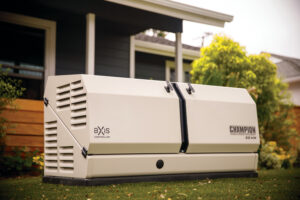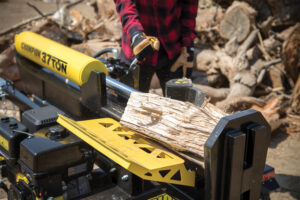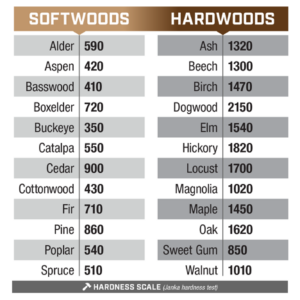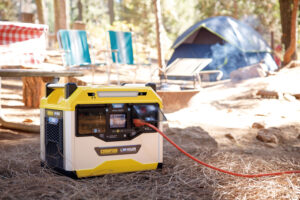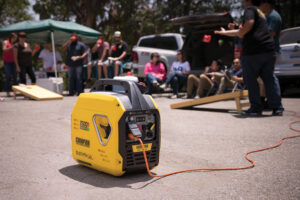The Calm in the Storm: Home Standby Generators in Hurricane Chaos
A home standby generator is a backup power system designed to automatically provide electricity to a home during a power outage. These generators are permanently installed outside of the home and are connected to the home’s electrical system. They are often powered by natural gas or propane and are designed to automatically start and deliver electricity to essential appliances and systems in the home when the main electrical utility fails.
Benefits of home standby generators:
- Automatic Operation: They are equipped with an automatic transfer switch that senses when the main power source goes out. Once a power outage is detected, the generator starts automatically, ensuring a seamless transition to backup power in seconds.
- Power Capacity: They come in various sizes and power capacities, allowing homeowners to select a unit that meets their specific needs. They can power essential appliances, such as refrigerators, heating and cooling systems, lights, all the way up to providing power to the entire home.
- Convenience: Homeowners do not need to refuel these generators manually, as they are connected to the home’s natural gas or propane supply. This ensures a continuous power source without the need for going outside and refueling.
- Safety: They are installed professionally and adhere to safety codes, ensuring that they are a safe and reliable source of backup power for the home.
- Peace of Mind: Having a home standby generator can provide peace of mind, especially for homeowners who rely on electricity for medical equipment or those who want to maintain a comfortable living environment during power outages.
During a hurricane
A home standby generator can be a valuable asset during a hurricane or other severe weather events that often lead to power outages. Here’s how a home standby generator can benefit you during a hurricane:
- Continuous Power Supply: Hurricanes can cause widespread and prolonged power outages due to strong winds, heavy rains, and storm damage. A home standby generator automatically kicks in when the main power source is disrupted, providing your home with continuous electricity. This ensures that your essential appliances and systems (such as refrigeration, heating, cooling, and sump pumps) keep running, maintaining your comfort and safety.
- Preserve Food and Medication: During a hurricane-related power outage, a standby generator can prevent the spoilage of perishable food in your refrigerator and freezer. If you rely on medical equipment that requires electricity, such as refrigerated medications, a standby generator can be a lifeline.
- Climate Control: Hurricanes often bring extreme weather conditions, which can lead to uncomfortable and potentially dangerous indoor temperatures. A standby generator can maintain your heating and cooling systems, ensuring that your home remains habitable during and after the storm.
- Security: A home with a functioning security system is less vulnerable to break-ins or other security risks. A standby generator helps to keep your security system active, providing peace of mind during a chaotic time.
- Sump Pump Operation: If your home has a sump pump to prevent basement flooding, a standby generator will ensure it continues to work, protecting your property from water damage caused by heavy rains and flooding.
- Overall Comfort and Convenience: Having electricity during a hurricane outage ensures you can use lights, charge devices, and access communication tools, making it easier to stay connected with emergency services and loved ones.
To get the most out of a home standby generator during a hurricane, it’s crucial to have it professionally installed and regularly maintained. Additionally, you should keep a supply of fuel (if your generator runs on propane) and be aware of safety precautions related to generator operation. In hurricane-prone areas, having a standby generator can be an essential part of your emergency preparedness plan.
Champion Home Standby
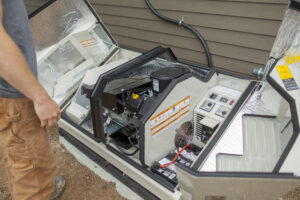
Champion Power Equipment offers a range of home standby generators that are designed to provide backup power to homes during electrical outages caused by hurricanes and other natural or man-made calamities.
We offer various models and capacities of home standby generators to meet the different power needs of homeowners.
Features:
- Quiet Operation: Champion Home Standby generators are designed to operate quietly to minimize disruption to your neighbors.
- Powerful: They can run on natural gas or propane and provide up to 22,000 watts to your home., Our units consume up to 20% less fuel than other competitors. Extension cords, refilling, or manual work are not needed.
- Reliable: The 24-volt starting system works in extremely cold temperatures (-22°F to 104°F) without the user of a battery warming kit
- Durable – housed in an aluminum-zinc coated, steel enclosure for weatherproof performance.
- Efficient: With our aXis Power Line Carrier technology, the generator can be installed faster and cheaper with less wire and the enhanced enhanced airflow design prolongs engine life.
- Champion Support: includes a 10-year limited warranty and free lifetime technical assistance from knowledgeable professionals.
For the most current and accurate information on the features of our home standby generators, please visit our official website, utilize our home standby generator size tool by answering a few easy questions, or get in touch with our customer support that’s available 24/7.
